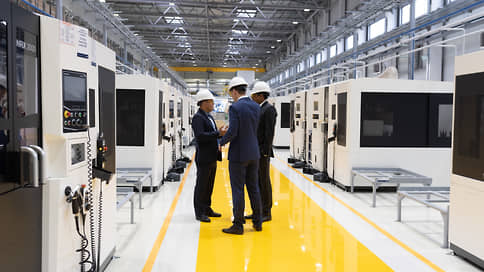Central Bank analysts see risks of price acceleration in excessive investment stimulation
[ad_1]

The increase in investment in industry in 2023, which ensured high rates of GDP growth, is largely explained by the “sanctioned” rise in price of investment equipment and the weakening of the ruble, Central Bank analysts believe. The growth of investment spending last year was inertial in nature – most enterprises were completing old projects, but new projects may further face labor market restrictions. A considerable number of low-productivity enterprises that did not invest enough in production in previous years remain, and their technological lag behind the leaders will continue. However, efficient enterprises can also reduce investments due to the current high yield on bank deposits. In conditions of uncertainty in the economy, deposits may be a safer strategy than investments in production.
The Department of Research and Forecasting (DIP) of the Central Bank, based on the results of a survey of 514 enterprises, in the analytical note “Investment activity in industry in 2023” confirms the high growth in investment recorded by official statistics. Taking into account inflation, Rosstat estimated the growth of capital investments in January-September 2023 at 10% in annual terms, in the third quarter – at 13.3%, which was the maximum for this period since 2017.
However, the DIP makes two significant reservations. Firstly, the increase in investment spending was nominal: it was largely due to the rise in prices of machinery and equipment against the backdrop of sanctions on the supply of technological imports and exchange rate changes. Secondly, investment activity is inertial in nature: the growth of capital investments is mainly ensured by old projects and those postponed due to sanctions – 79% of enterprises completed them. 57% invested in new projects. As older projects have become more expensive, offsetting the increased costs could limit investment in subsequent years, DIP fears. Inertia is also observed in the behavior of companies: the positive dynamics of investments was supported by previously investment-active companies. This worsens the technological prospects of the Russian economy: a persistent deficit or lack of investment in increasing production efficiency leads to a widening gap in the level of productivity between lagging enterprises and leaders, the authors of the note note.
While companies invest mainly in tangible assets: 62% of the investment volume is machinery, equipment, transport (80% of enterprises invested), intangible assets account for only 25% of the investment volume. A third of enterprises did not invest in scientific and industrial research, acquisition of patents and licenses, software, and personnel training. In the future, this approach will also limit the expansion of production: already now, a shortage of personnel is holding back investment for more than half of the respondents. Meanwhile, low-productivity sectors will continue to put pressure on the labor market: high capacity utilization and low provision of modern equipment are observed in industries that face increased demand for their products in 2023.
According to surveys, high domestic demand is the main incentive for enterprise investment (external demand is of little interest to the majority, which creates risks of production inefficiency). Excessive stimulus will increase the cost of final goods and increase inflationary pressure, to which the Central Bank responds by tightening monetary conditions.
Note that credit funds do not play a major role in the investment activity of enterprises: 29% of companies attracted bank loans for investment programs, 81% attracted their own funds (for 61% of them this is the main source of investment). The growth in investment was ensured by high profits of companies, but the increase in the key rate led to the fact that bank deposits became an attractive alternative to investment against the backdrop of macroeconomic instability and the geopolitical situation – along with a shortage of personnel, these factors were named by industrialists as the main restrictions on investment.
[ad_2]
Source link






